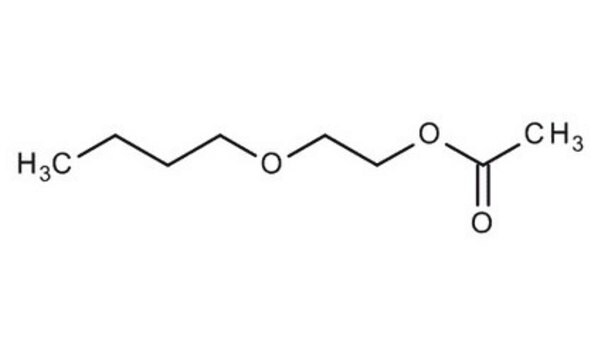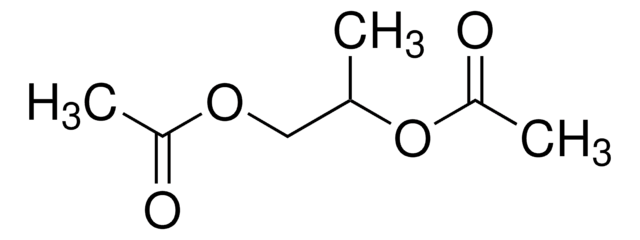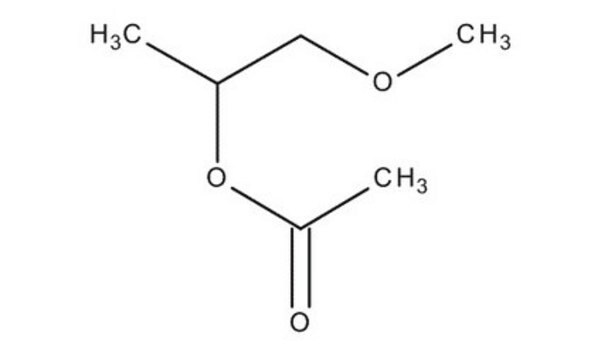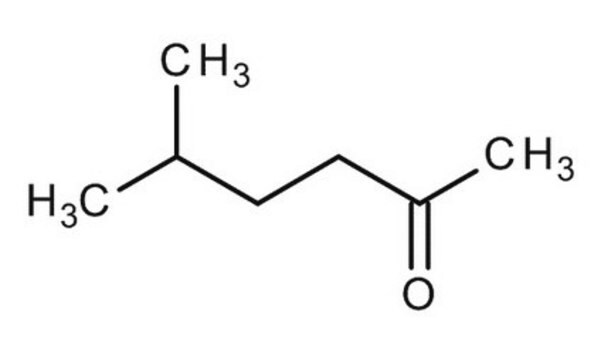Kluczowe dokumenty
307289
2-Butoxyethyl acetate
99%
Synonim(y):
1-Acetoxy-2-butoxyethane, BCA, Ethylene glycol monobutyl ether acetate
About This Item
Polecane produkty
gęstość pary
5.5 (vs air)
ciśnienie pary
0.29 mmHg ( 20 °C)
Próba
99%
Formularz
liquid
temp. samozapłonu
644 °F
granice wybuchowości
0.88 %, 33 °F
8.54 %, 135 °F
współczynnik refrakcji
n20/D 1.413 (lit.)
bp
192 °C (lit.)
gęstość
0.942 g/mL at 25 °C (lit.)
grupa funkcyjna
ester
ether
ciąg SMILES
CCCCOCCOC(C)=O
InChI
1S/C8H16O3/c1-3-4-5-10-6-7-11-8(2)9/h3-7H2,1-2H3
Klucz InChI
NQBXSWAWVZHKBZ-UHFFFAOYSA-N
Szukasz podobnych produktów? Odwiedź Przewodnik dotyczący porównywania produktów
Powiązane kategorie
Opis ogólny
Zastosowanie
- Three-Dimensional Printing of Scaffolds: 2-Butoxyethyl acetate was utilized in the synthesis of poly(glycerol sebacate) acrylate for 3D printing applications, highlighting its role as a solvent in developing biocompatible materials for medical implants and tissue engineering (Wu et al., 2020).
- Migration Analysis in Food Contact Materials: Demonstrates the application of 2-Butoxyethyl acetate in the extraction and analysis of migrating compounds from plastic baby bottles, using GC-MS to ensure consumer safety and compliance with food safety regulations (Onghena et al., 2014).
Hasło ostrzegawcze
Warning
Zwroty wskazujące rodzaj zagrożenia
Zwroty wskazujące środki ostrożności
Klasyfikacja zagrożeń
Acute Tox. 4 Dermal - Acute Tox. 4 Inhalation - Acute Tox. 4 Oral
Kod klasy składowania
10 - Combustible liquids
Klasa zagrożenia wodnego (WGK)
WGK 1
Temperatura zapłonu (°F)
168.8 °F - closed cup
Temperatura zapłonu (°C)
76 °C - closed cup
Środki ochrony indywidualnej
Eyeshields, Faceshields, Gloves, type ABEK (EN14387) respirator filter
Wybierz jedną z najnowszych wersji:
Masz już ten produkt?
Dokumenty związane z niedawno zakupionymi produktami zostały zamieszczone w Bibliotece dokumentów.
Klienci oglądali również te produkty
Nasz zespół naukowców ma doświadczenie we wszystkich obszarach badań, w tym w naukach przyrodniczych, materiałoznawstwie, syntezie chemicznej, chromatografii, analityce i wielu innych dziedzinach.
Skontaktuj się z zespołem ds. pomocy technicznej













